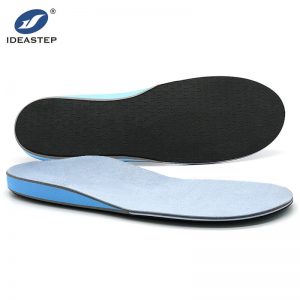What Is the Process of Creating Custom Orthotics?
You may have heard about the benefits of custom orthotics if you’ve been diagnosed with osteoarthritis or bunions, or if you’re recovering from an accident. These are devices that are designed to align your foot and ankle in an anatomically efficient posture so that you can move freely.
What are bespoke orthotics, and how do you get them?
Custom orthotics are insole-like biomechanical medical equipment. The study of the body, the forces exerted by human muscles, and gravity’s effect on the skeletal structure as a whole is known as biomechanics (which is why orthotics are considered biomechanical). When our feet are misaligned, custom orthotics are used to relieve the strain on our bodies. The motions that are engaged during the gait cycle are diverted and decreased by orthotics, which realign each foot (the sequence of activities when one foot touches the ground followed by the other to create movement). Because these orthotics are tailored, they are designed to address the specific difficulties with the foot of the person for whom they are being constructed.

There are three types of custom orthotics available:
1.Functional: This sort of custom orthotic is designed to position the feet in more ideal positions so that the body can support its own weight and move in the least detrimental way possible. Rigid or semi-rigid materials are used to make functional orthotics.
2.Accommodating: An accommodative orthotic is meant to ease tension from arthritic problems that cause joint pressure and make the foot immobile. Flexible or semi-flexible materials are used to make this sort of orthotic.
3.Therapeutic: This is the orthotic kind for you if you have irregularly shaped feet because it is meant to help with stability, arch and heel support, and forward movement.
You shouldn’t have any trouble fitting your tailored orthotics into your shoes because they’re constructed from perfect imprints of your feet. Furthermore, you will not notice them when walking, but you will notice the benefits of less stress on your joints and a more solid gait.
Creating personalized orthotics is a multi-step procedure.
Casting is the first step.
The first step is to place your foot on the ground. A physiotherapist will examine your feet extensively for this. A physiotherapist is a professional who treats and diagnoses problems with the foot, ankles, and other leg structures. Detailed measurements of your feet will be taken throughout the foot test. Your shoes will be examined, and questions about your lifestyle will be answered to establish how active you are. Plaster casting, which uses a cast of your feet, is one way of orthotic fabrication. This is done while sitting or lying down in a non-weightbearing position. To guarantee that your body weight is not causing stress on your feet, you must be in a neutral position; otherwise, the cast will be inaccurate. Wet plaster strips are used to wrap around your foot to form the cast. During the 5-10 minutes it takes for the plaster to harden, you won’t be able to move. The cast will be removed from your feet when the plaster has hardened and stored for 24 hours before being shipped to a facility that specializes in bespoke orthotics.
Step 2: Production
Your cast will be sent to an orthotics lab along with a prescription outlining the materials, measurements, and accessories that must be used in the manufacture of your orthotics. Specialists will check your prescription and begin the production procedure once you arrive at the lab. Your cast is pressed against a sheet of plastic or graphite material in the lab, where it is subjected to intense heat. The arch structure and heel of the biomechanical device are then secured with a cover made of a soft yet stable material.
Step 3: Gathering Materials
Rigid foundations and cushioning casing make up custom orthotic devices. Because they are also relatively flexible, materials like polypropylene (from the plastic family) or graphite are employed to form the rigid foundations. The materials must be hard with some flexibility so that they can withstand the irregular injury-producing motions that you make with your feet when walking without injuring you. The cushioning materials are next applied. Neoprene, silicone, and ethylene-vinyl acetate are examples of these materials. When the orthotic is ready, it is returned to your physiotherapist’s office for you to pick up.
What is the procedure for getting custom orthotics built for my feet?
You may need a prescription to receive your own pair of custom orthotics. If you don’t already visit a physiotherapist for your foot problems, your general practitioner can recommend you.
Traditional drugstore orthotics are more expensive than custom orthotics. Having orthotics that are custom-fit to your feet, on the other hand, is invaluable. You’ll be able to walk and exercise pain-free, and you’ll be able to live your life to the fullest. For more information on visiting our licensed physiotherapy clinic to talk about custom orthotics to repair misalignment issues with your feet, please contact us.
